10 foods named after places in the UK
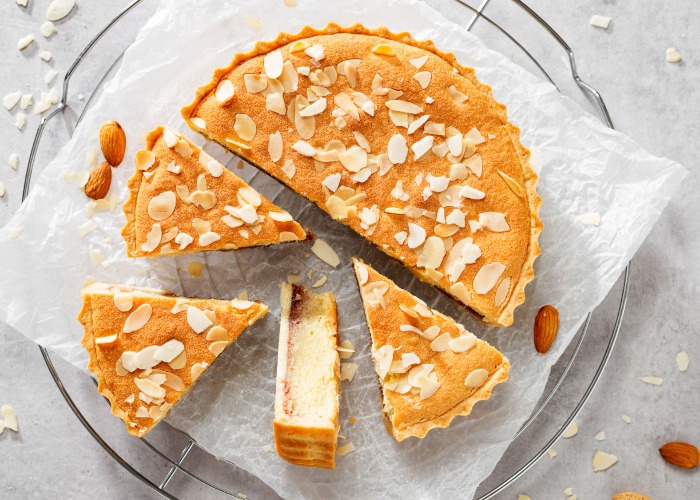
Put your foodie knowledge to the test with our guide to famous foods that owe their name to parts of the UK
While we Brits have not traditionally been celebrated for our culinary invention, there’s no denying that this island has contributed a few delicious creations to the must-eat menu. Here are 10 local delicacies that owe their names to the villages, towns and counties that made them.
1. Yorkshire pudding
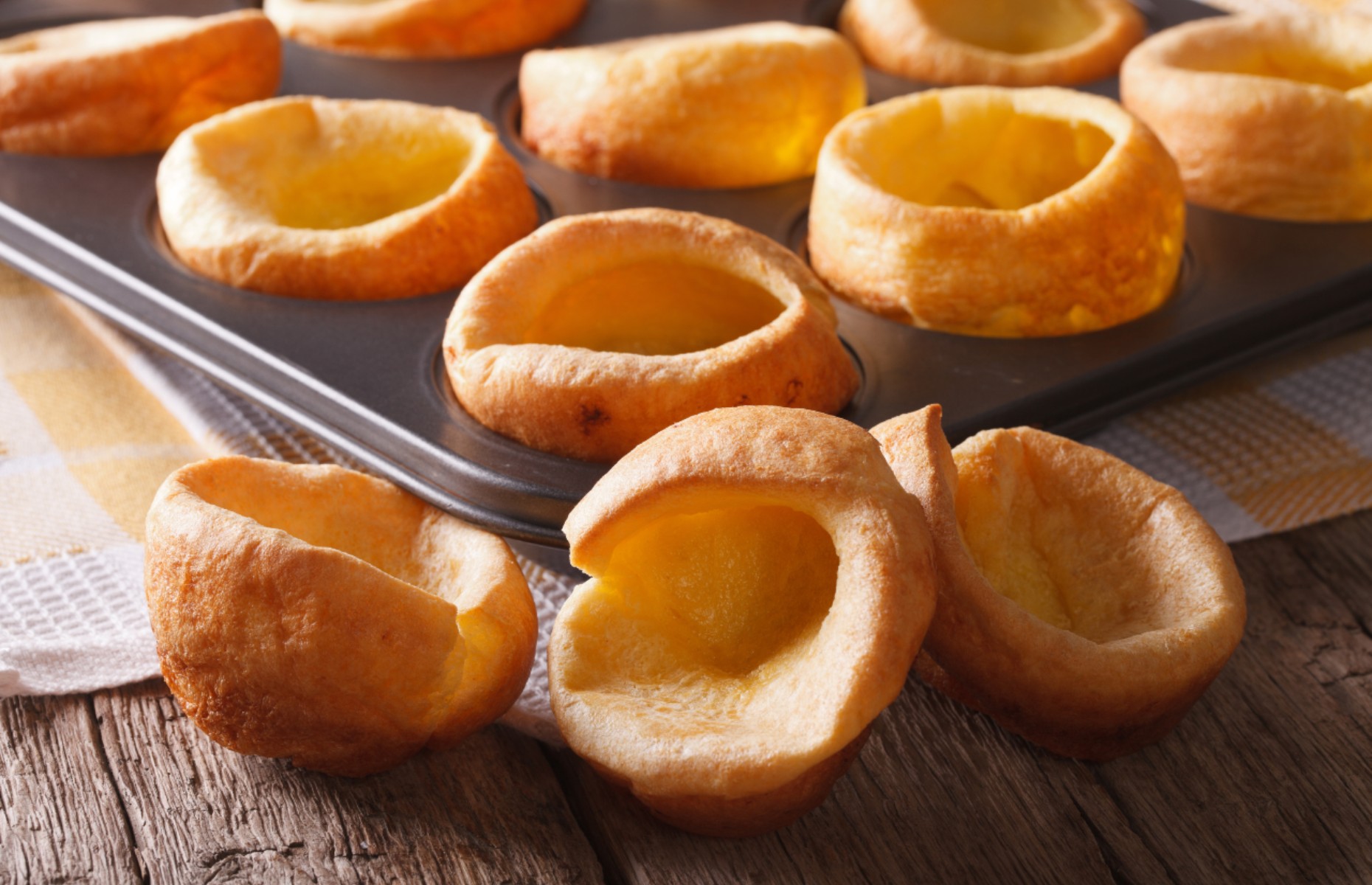 AS Food Studio/Shutterstock
AS Food Studio/Shutterstock
The highlight of the Sunday lunch for some, this humble side dish made from batter started out as a 'dripping pudding' to collect the juices under roasting meat. It was renamed after the northern county in 1747 by author Hannah Glasse in The Art of Cookery Made Plain and Easy, and is held in such affection, there’s now a Yorkshire Pudding Day on the first Sunday of February.
Originally served as a starter with gravy, Yorkshire pud was made in one large dish and sliced. But in time it became part of the main event, made in individual portions, along with being a component of toad in the hole.
William Jackson Food Group in Hull were the first company to commercially produce Yorkshire pudding, developing the famous Aunt Bessie’s frozen version when Butlins asked them to supply their holiday camps in 1974. Now they churn out 20 million a week.
Try our vegan Yorkshire pudding recipe
2. Stilton cheese
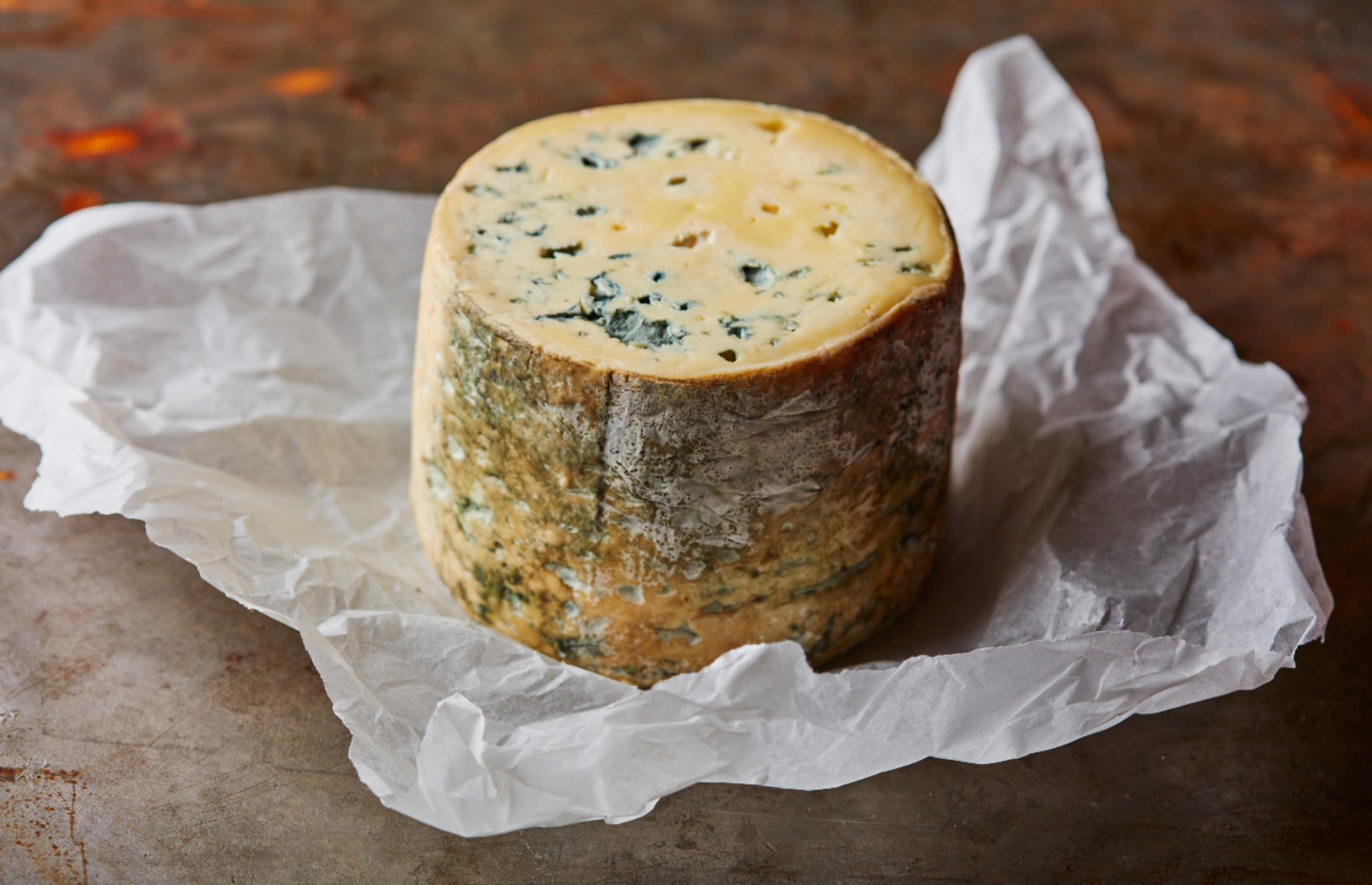 Liv friis-larson/Shutterstock
Liv friis-larson/Shutterstock
Vying with Cheddar for the title of Britain’s most famous fromage, Stilton has preserved its standards compared to its ubiquitous rival by securing Protected Designation of Origin (PDO) status for both the blue and white versions. But surprisingly, the Cambridgeshire village that gave the cheese its name cannot produce it – the PDO only applies to wheels made in Derbyshire, Leicestershire and Nottinghamshire.
White Stilton is best eaten young, usually paired with fruit, while the blue must be aged for at least nine weeks. The veins are created by injecting the cheese with penicillium roqueforti, using stainless steel needles which allows oxygen to reach the mold to help it grow.
The first mention of Stilton was in a newsletter by botany professor Richard Bradley in 1723, while Daniel Defoe referred to it as the "English Parmesan" the following year. The writer suggested that the cheese was served with a side of maggots – a pairing that we can be thankful did not last.
Try this ham and Stilton tartlet recipe
3. Eccles cake
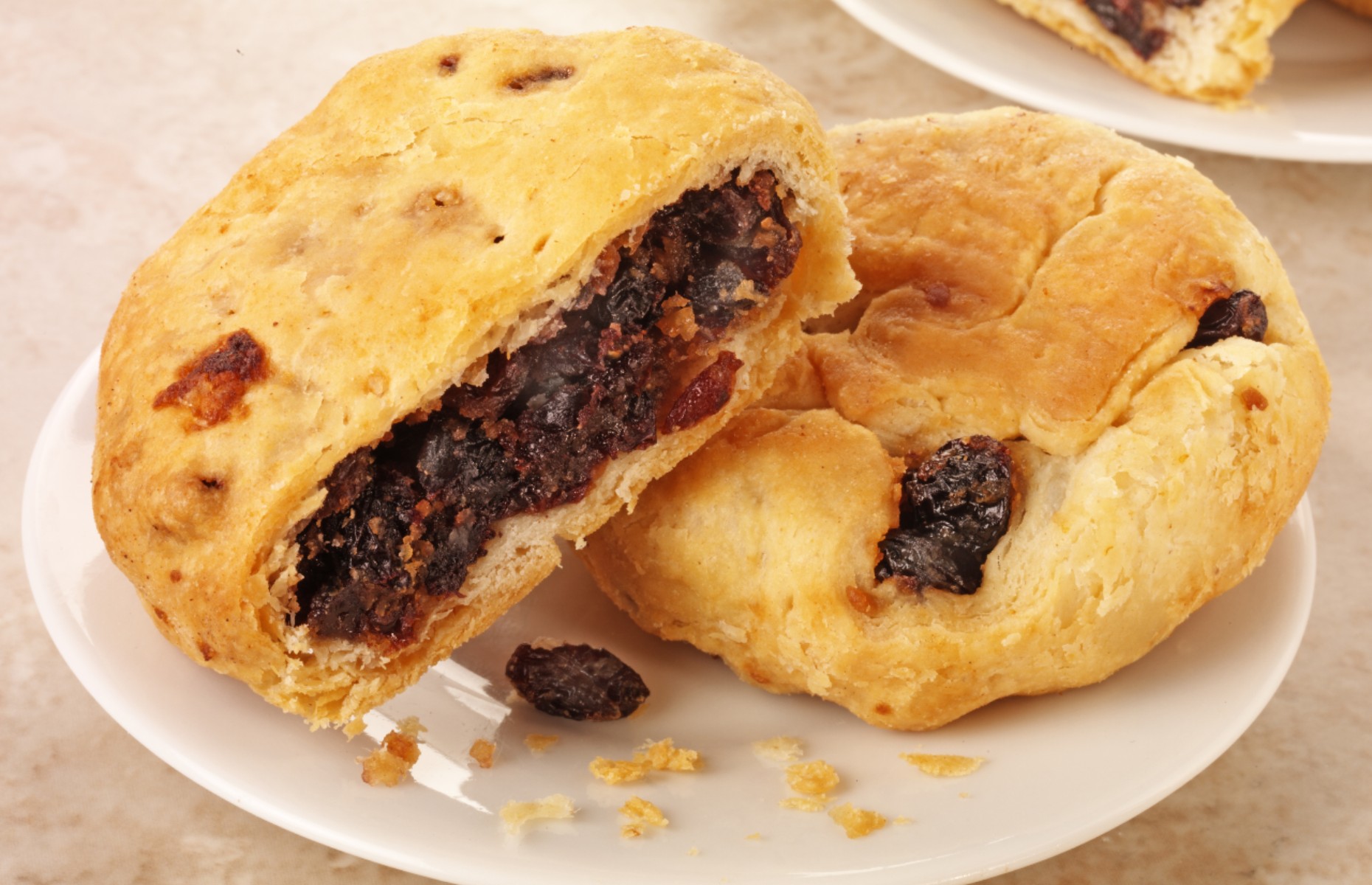 CKP1001/Shutterstock
CKP1001/Shutterstock
These currant-filled pastries are a sweet pie not a cake, sometimes served with a slice of Lancashire cheese. It’s thought they were baked for a religious festival to celebrate St Mary of Eccles, long before James Birch was the first to sell them at his shop in the town of Eccles in 1793. Chorley cakes, Blackburn cakes and Sad cakes are less famous regional variations.
Flaky pastry, demerara sugar, candied peel and spices are typical of the treat, which has the unappetising nickname 'squashed fly cake', but as it has no protected status, recipes vary. "A lot of traditional spiced cakes are from the west of the country because that is where our big ports were and ships carrying spices would dock there," says food historian Pen Vogler, author of Scoff: A History of Food and Class in Britain.
In 2013, Lancashire Fire and Rescue Service issued a warning after it attended three fires caused by people heating up Eccles cake in their microwaves and setting the sugar alight. Shop bought ones now carry a warning to warm up in the oven only.
4. Cullen skink
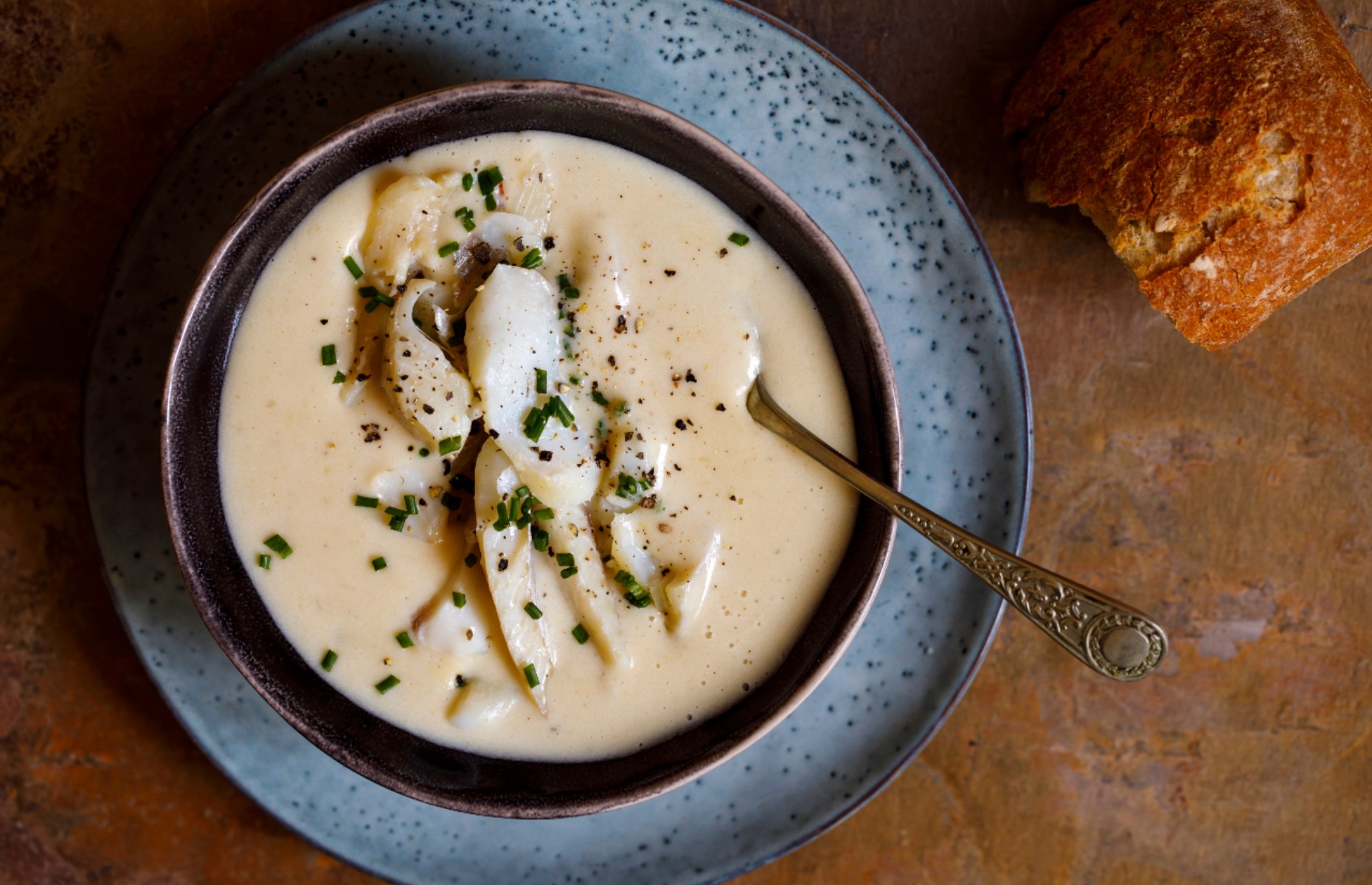 Magdanatka/Shutterstock
Magdanatka/Shutterstock
This hearty fish soup is a speciality of Cullen on Scotland’s northeast coast and combines smoked haddock (ideally finnan haddie, an undyed, cold-smoked type), potatoes and onion with either milk or cream. Served everywhere from kitchen tables to formal dinners, it rivals haggis and porridge for the most popular Scottish national dish.
Skink was originally a pottage, using scrapings of a cow’s front leg, and came from the Gaelic word for essence. But when meat was scarce in the 1890s, villagers substituted their native smoked fish to make a distinctive new dish. Such is the pride locals take in their recipe that the tourist board have hosted the Cullen Skink World Championships every year since 1999.
5. Melton Mowbray pork pies
 Stocksolutions/Shutterstock
Stocksolutions/Shutterstock
These aren’t just any pork pies. Melton Mowbray in Leicestershire prides itself on making the best in Britain – and since April 2008, this meaty snack has PGI (Protected Geographical Indication) status, meaning only pies made using a traditional recipe within a 10-square-mile-zone (28 sq km) around the town can claim the name.
The secret of their success is hand-formed hot water crust pastry, which gives the characteristic bowed sides, and a filling of uncured, chopped pork, to ensure the cooked colour is grey. The pies were a happy benefit of Stilton production in the region in the 1700s – the leftover whey was fed to pigs, resulting in plenty of pork.
"They weren’t posh at all but got talent-spotted by the huntsmen because it was a sturdy thing that could survive the jumps," says Pen Vogler. "So the Melton Mowbray became popular with the working people and aristocracy at the same time, and it was unusual that it missed the middle classes."
6. Bakewell tart
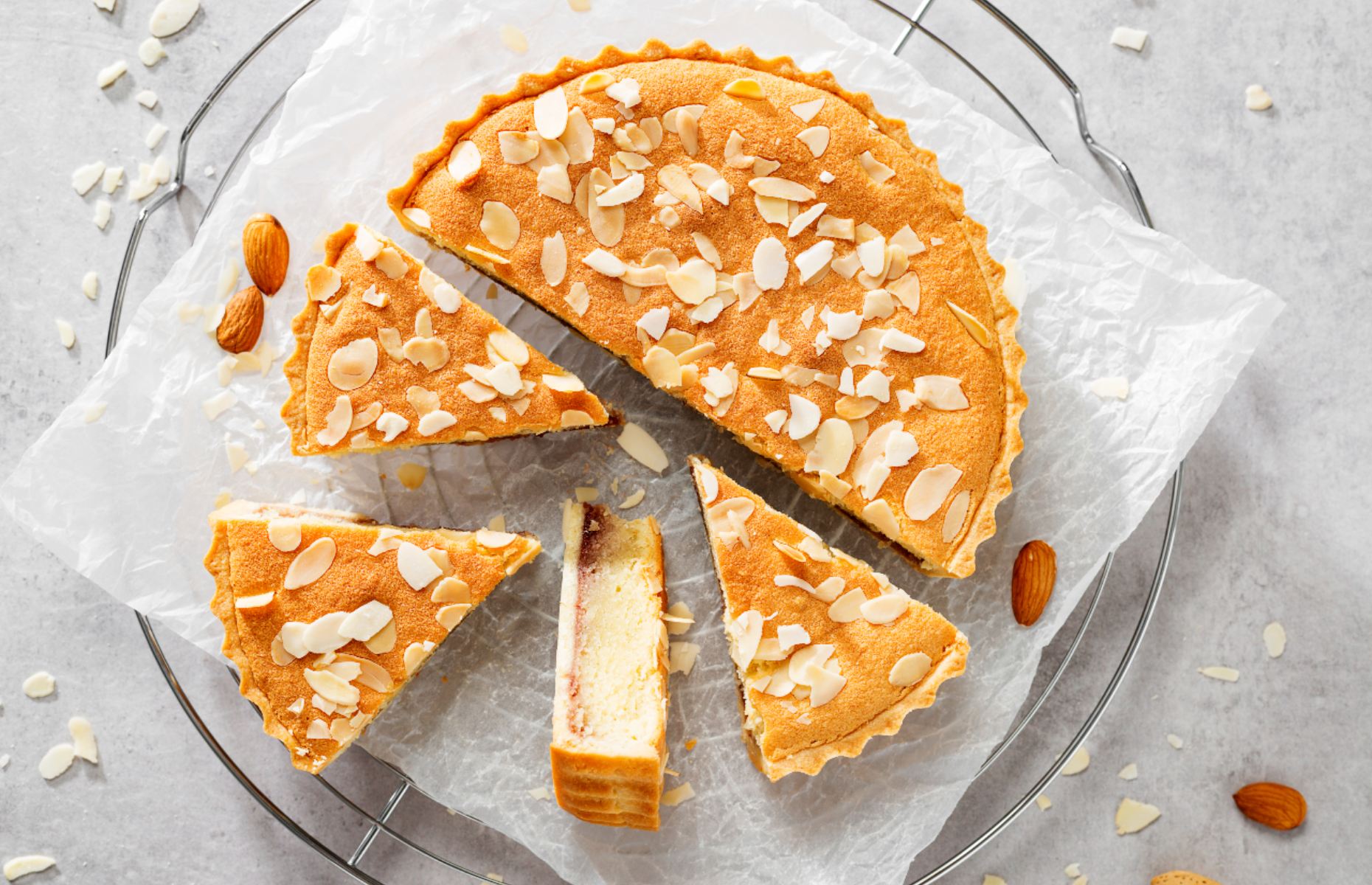 Nelea33/Shutterstock
Nelea33/Shutterstock
A teatime favourite from Derbyshire that can be served warm or cold, the Bakewell tart is a shortcrust pastry shell with a layer of jam, frangipane and a topping of almonds. It’s actually a variation of the Bakewell pudding, which has a puff pastry base and an almond and egg filling.
Legend has it that Mrs Greaves, landlady of The White Horse Inn in Bakewell, asked her cook to make strawberry tarts for a guest around 1820 but there was a mix up, meaning jam ended up under a custard mixture. The recipe was included in the 1845 edition of Modern Cookery for Private Families, with the tart version arriving around 1900.
The Peak District’s pride and joy has continued to evolve, with the 20th century bringing us the cherry Bakewell – a smaller version with an iced top decorated with a glace cherry. "Although Bakewell tarts and puddings are made with almonds and they seem an incredibly foreign thing as we can’t grow them here, they have always been an important part of our diet," says Pen Vogler. "They came in from Jordan and people had almond milk on fast days in medieval times."
Discover more fabulous foods that made places famous
7. Eton mess
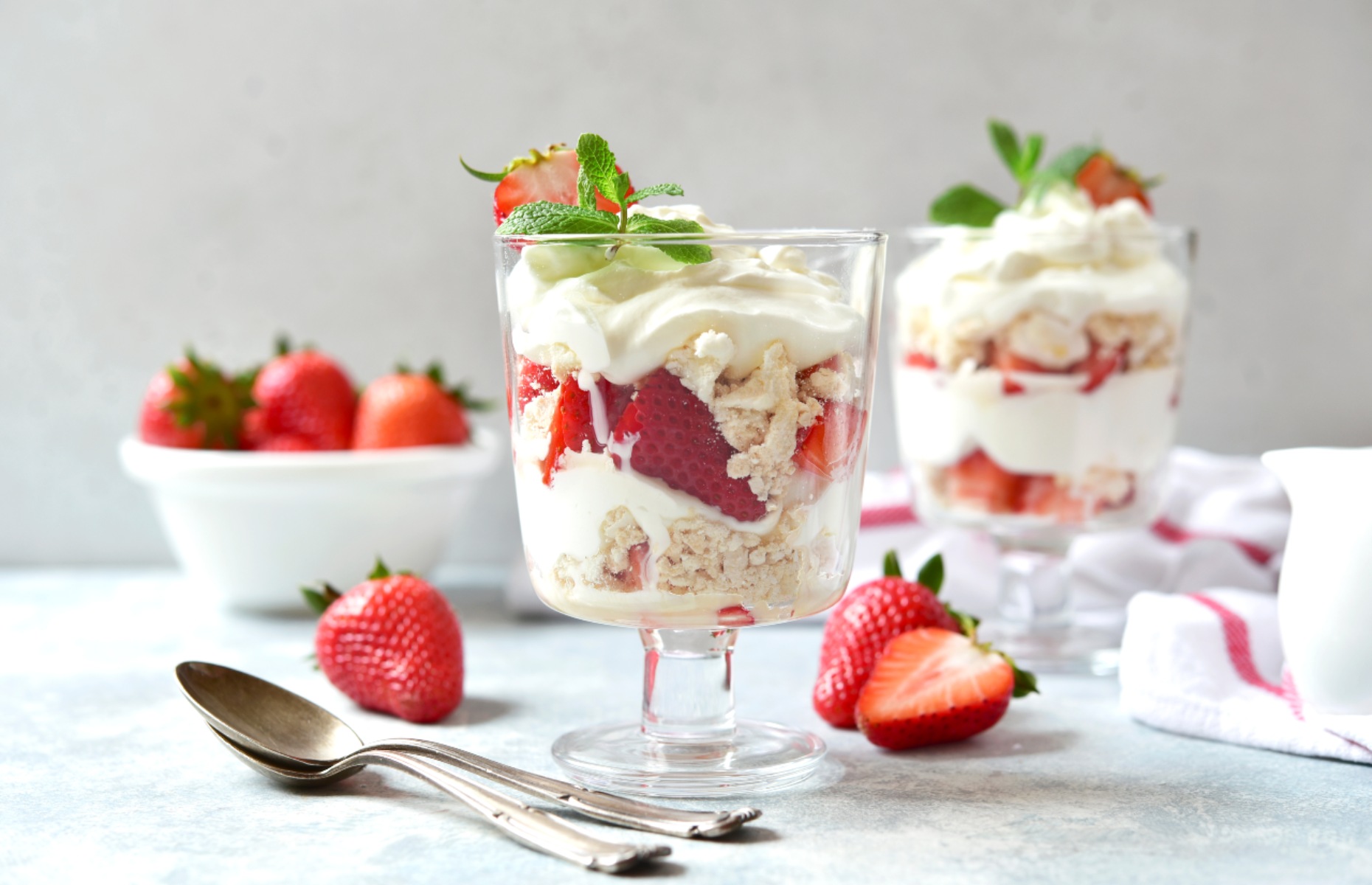 Liliya Kandrashevich/Shutterstock
Liliya Kandrashevich/Shutterstock
This simple mix of strawberries, meringue and whipped cream is a quintessential summer dessert, first appearing in print in 1893 and famously served in the tuck shop at Eton College in Berkshire.
There are stories about a pavlova being dropped or a Labrador sitting on a meringue at a picnic, but the real inspiration for this pudding has been lost in the mists of time. What we do know though is that the original recipe also included bananas – chef Heston Blumenthal has served his version at The Fat Duck – but today it's mostly made with seasonal strawberries.
Eton mess remains part of the public school’s unique Fourth of June celebrations to mark King George III’s birthday, but Eton Provost Lord William Waldegrave, a former Tory MP, insists there is no Eton mess – only strawberry or banana mess.
Try this Eton Mess recipe with Greek yogurt
8. Worcestershire sauce
 Faizal Ramli/Shutterstock
Faizal Ramli/Shutterstock
Worcestershire sauce is the secret ingredient of many a dish, its piquant flavour adding oomph to a bloody Mary, Welsh rarebit, Caesar dressing – and anything you fancy. The exact recipe is closely guarded by creators Lea & Perrins, who are still based in Worcester, but it is a combination of fermented anchovies, vinegar, molasses, spices, garlic, shallots and tamarind.
Pharmacists John Lea and William Perrins claimed their 1837 concoction came from a failed attempt to recreate a Bengal fish sauce for a nobleman, thought to be Baron Marcus Sandys. They left the rancid result in a barrel and 18 months later it had matured to a perfect tangy taste. Within ten years it was being exported across the British Empire and continues to be a kitchen staple worldwide, known in much of South America as 'English sauce'.
Read our complete guide to Worcestershire sauce
9. Cumberland sausage
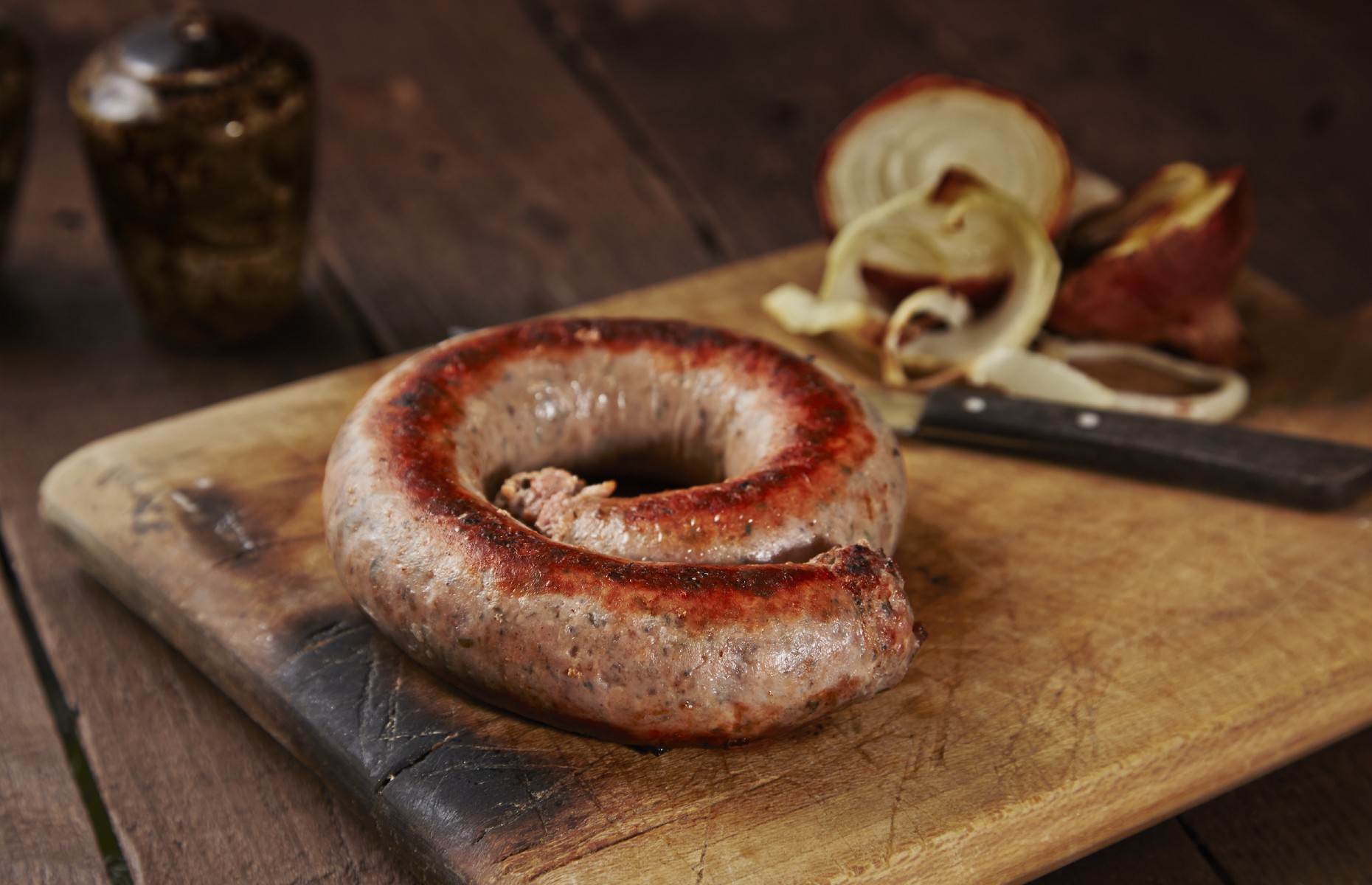 Image north/Shutterstock
Image north/Shutterstock
The county that gave them their name has long gone along with the Cumberland pig originally used to make them, but this peppery sausage produced in a long coil instead of links remains a top British banger. However, they owe a debt to the region’s links with the rest of the world. It’s thought German miners working there in the 16th century made the sausages to remind them of home, while the seasoning is a result of the influx of exotic spices into the port of Whitehaven in the 18th century.
It gained PGI status in March 2011, meaning the name 'Traditional Cumberland sausage' can only be used for long coil bangers produced, processed and prepared in Cumbria, with a meat content of at least 80% and seasonings limited to white pepper, black pepper, salt, thyme, sage, nutmeg, mace and cayenne. Snags that do not comply can be sold as 'Cumberland sausages' without the PGI mark.
10. Kendal mint cake
 CKP1001/Shutterstock
CKP1001/Shutterstock
This soft minty treat that has powered many a weary walker onwards was in fact a happy accident, invented in 1869, when confectioner Joseph Wiper left the boiled solution for glacier mints overnight and it went cloudy. But he took advantage of the mishap, naming it after the Cumbrian town where his wife’s family sweet company was based.
His nephew Robert later rebranded it as the world’s first energy bar, and Sir Edmund Hillary and his team replenished their glucose levels with the stuff when they scaled Everest in 1953. Today, three Kendal companies continue to manufacture it – Romney’s, Quiggin’s and Wilson’s.
Comments
Do you want to comment on this article? You need to be signed in for this feature